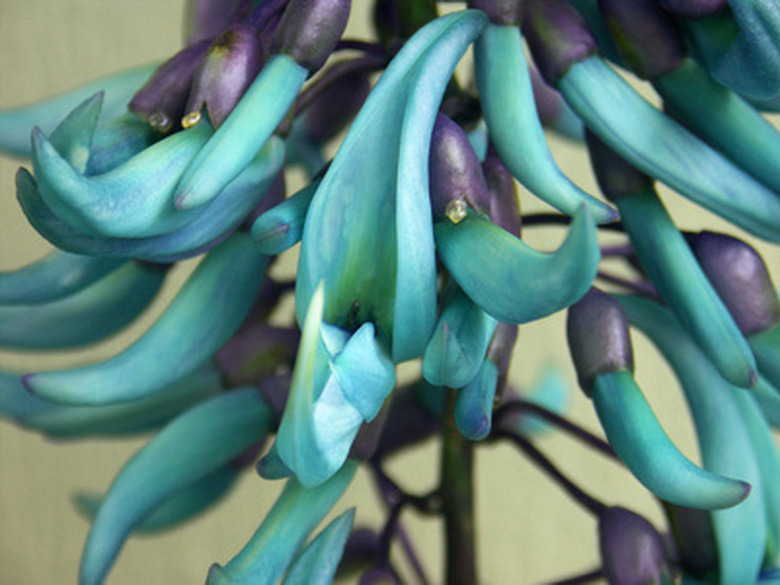Jade Plant & Its Environment
The jade plant is a popular, easy to grow succulent plants that live for years with minimal care when put in the right environment. According to the University of Florida Cooperative Extension service planting jade outdoors is limited to Florida, California and Arizona. Jade makes an excellent indoor plant.
Succulents
According to the University of Illinois, succulents are plants that absorb water and store water in their flesh for later use. Cacti are part of the succulent family, but the jade plant is not a cactus. Cacti have an areole on the plant which sprouts flowers and spines, a characteristic the jade plant does not share. However, the jade plant does store water in its large, thick leaves.
- The jade plant is a popular, easy to grow succulent plants that live for years with minimal care when put in the right environment.
- According to the University of Illinois, succulents are plants that absorb water and store water in their flesh for later use.
Sunlight
Jade plants require a good amount of sunlight. Full sunlight, or slightly filtered bright light is the best lighting for the jade plant. Jade requires four hours of direct, bright sunlight a day and do best at a south or southwest facing window. According to Clemson University Extension, direct sunlight makes the plant able to withstand higher temperatures than those kept in poor light. Jade plants require between 65 and 75 degrees Fahrenheit to survive.
Soil Moisture
Water the soil until it is moist, but not wet, during the plant's active growing season in the spring and summer. Allow the soil to dry between watering. According to Clemson University Extension, jade plants can survive drought-like conditions and will survive when the soil is allowed to dry before watering, but bone dry soil for extended periods may cause dwarfing in the plant, leaf drop and eventual death.
- Jade plants require a good amount of sunlight.
- According to Clemson University Extension, jade plants can survive drought-like conditions and will survive when the soil is allowed to dry before watering, but bone dry soil for extended periods may cause dwarfing in the plant, leaf drop and eventual death.
Soil
Jade plants require a soil that drains easily and does not retain moisture. Succulents are susceptible to root rot and do not survive long in extremely moist soil. According to the University of Illinois, checking the base of the plant for softness will indicate root problems. A soil marketed as a cacti soil mix, or one part sterilized organic soil, one part sphagnum moss and three parts sand as a soil, provide ample drainage and the ideal environment for the jade plant.
Fertilization
Jade plants do not require a lot of nutrients in their soil, but a water soluble fertilizer applied every three or four months will keep the plant healthy and promote flowering in an older jade plant. According to Clemson University, only fertilize the plant four months after the plant has been transplanted to a new pot.
